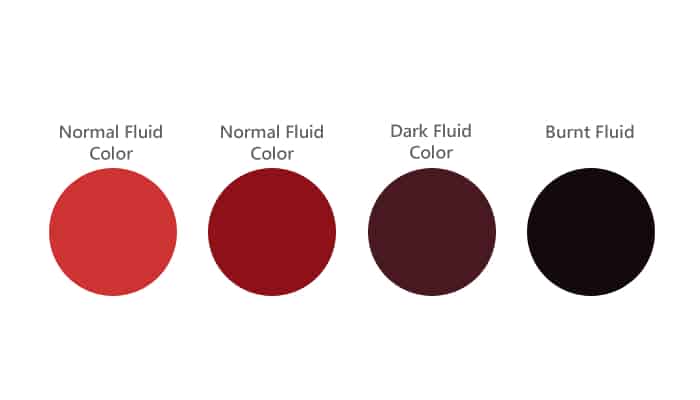Understanding Manual Transmission Fluid for Your Ford Ranger
When it comes to keeping your 1997 Ford Ranger running smoothly, one of the most crucial aspects is ensuring that you have the right manual transmission fluid. This isn’t just a matter of preference; using the correct fluid can significantly affect the performance and longevity of your transmission.
Manufacturer Recommendations
| Popular posts |
|---|
| What to do to prolong the life of your manual gearbox |
| Automatic transmission: what it is, how it works |
Ford has specific guidelines for the type of manual transmission fluid that should be used in the 1997 Ranger. According to the manufacturer, the recommended fluid is:
- Ford Motorcraft MERCON transmission fluid
This fluid is designed to meet the unique requirements of Ford transmissions, providing optimal lubrication and protection. It’s essential to stick with the manufacturer’s recommendations because using the wrong type of fluid can lead to poor shifting performance, increased wear, and even catastrophic transmission failure.
Specifications of Recommended Fluid
The specifications for Ford Motorcraft MERCON fluid are designed to ensure that your transmission operates efficiently. Here are some key characteristics:
Viscosity
- Typically, MERCON fluid has a viscosity rating of around 10W, which means it flows well at both high and low temperatures.
Performance Standards
- Meets or exceeds the requirements set by the American Petroleum Institute (API).
- Compatible with various seal materials used in the transmission.
Why Use the Right Fluid?
Using the correct transmission fluid is not just a recommendation; it’s a necessity. Here’s why:
- Protection Against Wear: The right fluid provides a protective barrier between moving parts, reducing friction and wear.
- Improved Shifting: Proper lubrication ensures smooth gear changes, enhancing your driving experience.
- Heat Resistance: Quality transmission fluid can withstand high temperatures, preventing overheating and potential damage.
- Seal Compatibility: Using the recommended fluid helps maintain the integrity of seals and gaskets, preventing leaks.
Confirmation from Authoritative Sources
To back up these recommendations, various automotive sources and manuals confirm that using Ford Motorcraft MERCON fluid is essential for the 1997 Ford Ranger. The Ford service manual explicitly states that this fluid is designed for optimal performance in their manual transmissions. Additionally, automotive forums and expert mechanics consistently emphasize the importance of adhering to manufacturer specifications to avoid costly repairs down the line.
In summary, when it comes to your 1997 Ford Ranger’s manual transmission fluid, don’t cut corners. Stick to Ford’s recommendations and ensure that you’re using the right fluid to keep your truck running at its best.
Recommended Oil Brands for Your Ford Ranger Manual Transmission
When it comes to maintaining your 1997 Ford Ranger, choosing the right manual transmission fluid is crucial. While Ford Motorcraft MERCON is the manufacturer’s recommendation, many owners and mechanics have shared their experiences with various brands on forums and in discussions. Here’s a look at some of the recommended oil brands that have garnered positive feedback from the community.
Ford Motorcraft MERCON
As the factory-recommended fluid, Ford Motorcraft MERCON is often the first choice for many owners. Here’s why:
- Designed specifically for Ford transmissions, ensuring compatibility and performance.
- Widely available at Ford dealerships and many auto parts stores.
- Trusted by mechanics and enthusiasts alike for its reliability.
Many users report that using Motorcraft MERCON has led to smoother shifting and improved overall transmission performance.
Valvoline DEX/MERC ATF
Valvoline is another brand that comes up frequently in discussions among Ford Ranger owners. Here are some highlights:
- Meets the DEXRON and MERCON specifications, making it a versatile option.
- Known for its high-quality formulation that provides excellent protection against wear.
- Many users have noted improved shifting performance after switching to Valvoline.
Feedback from forums indicates that Valvoline DEX/MERC ATF is a solid alternative for those looking for a reliable fluid that won’t break the bank.
Castrol Transmax DEX/MERC
Castrol is a well-respected name in the automotive industry, and their Transmax line is often recommended for manual transmissions. Here’s what users have to say:
- Offers excellent thermal stability and resistance to oxidation.
- Compatible with both DEXRON and MERCON specifications.
- Users report smooth gear changes and a noticeable reduction in noise.
Many owners appreciate that Castrol Transmax provides a good balance of performance and affordability.
Royal Purple Synchromax
For those looking for a synthetic option, Royal Purple Synchromax is frequently mentioned in discussions about manual transmission fluids. Here are some key points:
- Designed specifically for manual transmissions, offering superior protection and performance.
- Users have reported improved shifting and reduced wear on synchronizers.
- While it may be pricier than conventional fluids, many feel the performance benefits justify the cost.
Feedback from owners suggests that Royal Purple Synchromax is particularly favored by those who prioritize performance and longevity.
Amsoil Manual Transmission Fluid
Amsoil is known for its high-performance lubricants, and their manual transmission fluid is no exception. Here’s what users have experienced:
- Provides excellent protection against wear and thermal breakdown.
- Many users report that it significantly improves shifting smoothness.
- Long-lasting performance, often extending the time between fluid changes.
While Amsoil may not be as widely available as some other brands, those who use it often rave about its performance.
Owner Feedback and Experiences
Across various automotive forums, owners of the 1997 Ford Ranger have shared their experiences with different brands of manual transmission fluid. Here are some common themes:
- Consistency is key: Many users emphasize the importance of sticking with a single brand once they find one that works well for their vehicle.
- Personal preference: Some owners have a strong preference for synthetic fluids, citing better performance in extreme conditions.
- Price vs. performance: While some owners are willing to pay a premium for high-quality fluids, others find that conventional options perform just as well for their needs.
In summary, while Ford Motorcraft MERCON remains the top recommendation, several other brands have proven themselves reliable through owner feedback and experience. Whether you choose a synthetic option or stick with conventional fluids, the key is to ensure compatibility with your transmission and to monitor performance over time.
Change Interval for Your Ford Ranger Manual Transmission Fluid
Maintaining your 1997 Ford Ranger’s manual transmission involves more than just using the right fluid; it also requires regular changes to keep the transmission running smoothly. Understanding the appropriate change interval and the concept of partial transmission oil changes is essential for every owner.
Recommended Change Interval
The general recommendation for changing manual transmission fluid in vehicles like the Ford Ranger is typically between 30,000 to 60,000 miles (48,000 to 96,000 kilometers). However, this can vary based on several factors, including driving conditions and how the vehicle is used. Here are some considerations:
- Driving Conditions: If you frequently drive in stop-and-go traffic, tow heavy loads, or operate in extreme temperatures, you may need to change the fluid more often.
- Usage: Vehicles used for off-roading or in harsh environments may also require more frequent changes due to increased wear and contamination.
- Manufacturer Guidelines: Always refer to the owner’s manual for specific recommendations tailored to your vehicle.
Statistical data from automotive maintenance studies suggests that adhering to these intervals can significantly reduce the risk of transmission issues. According to a report by the Automotive Research Institute, vehicles that follow a strict maintenance schedule, including timely fluid changes, experience fewer transmission failures and costly repairs.
Partial Transmission Oil Changes
In many cases, a full transmission fluid change can only be achieved by removing the transmission from the vehicle, which is a labor-intensive and costly process. This is where partial transmission oil changes come into play.
What is a Partial Transmission Oil Change?
A partial transmission oil change involves draining a portion of the old fluid and replacing it with new fluid. This method is often more practical for vehicle owners and can still provide significant benefits. Here’s how it works:
- Draining Process: Typically, only a portion of the fluid is drained from the transmission pan, which can be done without removing the transmission.
- Fluid Replacement: New fluid is added to replace the drained fluid, helping to refresh the transmission’s lubrication properties.
- Frequency: Partial changes can be performed more frequently than full changes, allowing for better maintenance over time.
Justification for Partial Changes
Partial transmission fluid changes can be justified based on several factors:
- Cost-Effectiveness: Performing partial changes is less expensive than full fluid changes, making it more accessible for regular maintenance.
- Improved Fluid Quality: Regularly replacing a portion of the fluid helps maintain better overall fluid quality, reducing the buildup of contaminants.
- Ease of Maintenance: Partial changes are easier to perform, allowing owners to maintain their vehicles without the need for extensive labor.
According to the National Institute for Automotive Service Excellence (ASE), regular partial changes can extend the life of the transmission by keeping the fluid cleaner and more effective. This is especially important in older vehicles, where the risk of sludge and debris buildup is higher.
In summary, while the recommended change interval for your 1997 Ford Ranger’s manual transmission fluid is generally between 30,000 to 60,000 miles, considering partial transmission oil changes can be a practical and effective maintenance strategy.
What Color Should Transmission Fluid Be?


